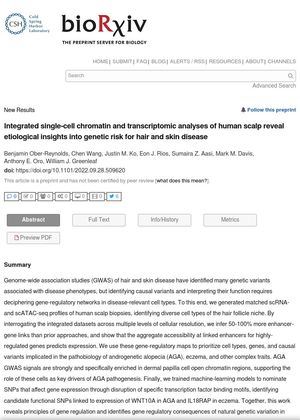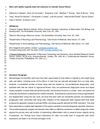Integrated Single-Cell Chromatin and Transcriptomic Analyses of Human Scalp Reveal Etiological Insights Into Genetic Risk for Hair and Skin Disease
September 2022
in “
bioRxiv (Cold Spring Harbor Laboratory)
”
single-cell RNA sequencing ATAC sequencing gene-regulatory networks hair follicle niche enhancer-gene links androgenetic alopecia dermal papilla cells open chromatin regions SNPs transcription factor binding motifs WNT10A IL18RAP single-cell RNA seq ATAC seq gene networks hair follicle enhancer links AGA dermal papilla chromatin regions single nucleotide polymorphisms transcription factor motifs

TLDR The research provided new insights into the genetic factors contributing to hair loss and skin conditions by analyzing individual cells from the human scalp.
The study used single-cell RNA and ATAC sequencing profiles from human scalp biopsies to understand the gene-regulatory networks in cell types relevant to hair and skin diseases. The researchers identified diverse cell types in the hair follicle niche and inferred 50-100% more enhancer-gene links than previous methods. They found that the aggregate accessibility at linked enhancers for highly-regulated genes predicts expression. The study prioritized cell types, genes, and causal variants implicated in androgenetic alopecia (AGA), eczema, and other complex traits. AGA genetic signals were found to be strongly enriched in dermal papilla cell open chromatin regions, supporting these cells' role in AGA pathogenesis. Machine-learning models were used to nominate SNPs that affect gene expression through disruption of specific transcription factor binding motifs, identifying candidate functional SNPs linked to expression of WNT10A in AGA and IL18RAP in eczema.

